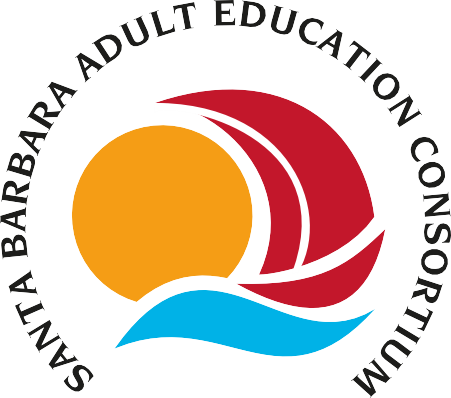SBCC REMOTE ESOL CASE STUDY: Low- and High-Intensity Remote ESOL Options
Submitted By: Corlei Prieto
Santa Barbara AEBG Consortium
Website: https://www.sbcc.edu/extendedlearning/esl.php Case Study Flyer: https://publications.jsi.com/JSIInternet/Inc/Common/_download_pub.cfm?id=24620&lid=3
Type of Practice: Program Development / Curriculum / Classroom
Program Area(s): ABE / ASE, ESL / EL Civics / Citizenship
Region: Central Coast
Consortia Involved: Santa Barbara AEBG Consortium
Program Overview
The SBCC Remote ESOL programs provides students with multiple remote learning options depending on their interest, availability, and life circumstances, and the impact of this program was included in a case study sponsored by World Education, Inc.
The Program of Practice
This case study is part of the Remote Adult ESOL1 (English for Speakers of Other Languages) Project led by World Education, Inc. The SBCC Noncredit ESL Program was one of eight full program profiles selected for its innovative program design and promising practices. The project’s goal is to document and disseminate viable remote adult ESOL program models and practices so that ESOL instruction can be done at scale efficiently and effectively in a variety of settings. The impetus for the project was to identify strategies for meeting the current interest and unmet demand as well as meeting potential demand prompted by English language requirements for U.S. citizenship under immigration reform. During winter and spring of 2021, the project investigated selected ESOL programs’ and learners’ needs, experiences, and promising instructional and learner support practices that rely predominantly on technology-rich strategies and tools deployed remotely.
The Response
Students at SBCC School of Extended Learning have multiple remote learning options depending
on their interest, availability, and life circumstances.
The Unique Features of the Program
SBCC ESL Remote Program Design Learning options range from open-entry learning circles that meet once a week to regular ESOL classes and intensive IET courses that meet 30–32 hours per week in eight-week cycles. Instruction is virtual and synchronous. IET courses that accommodate ESOL students include Personal Care Attendant, Green Gardener (landscaping), and Construction. Each IET program consists of three components: vocational skills, ESOL language support, and career exploration/job search skills. ESOL instructors are teamed up with vocational skills instructors for live, virtual classes on Zoom to support students’ language learning and comprehension. Further ESOL support is provided through small breakout room group discussions. In addition, every Friday students participate in a job search skills/workplace readiness small group meeting via Zoom to learn about topics such as resume writing, job interview skills,
and using the online job search and career development website Eureka. The goal is for students to be job-ready upon completion. Selected IET courses target unemployed adult students who receive $200/week to attend classes remotely, funded with federal CARES Act and higher education emergency. Another program component is open-enrollment learning circles that are offered remotely and synchronously via Zoom once a week in 5–6-week sessions. Learning circle students can join at any time throughout the session and are provided with free BurlingtonEnglish accounts. People who want to join the ESOL program, but missed the beginning of the cycle, are told about the learning circles. The meetups consist of walk-throughs of BurlingtonEnglish lesson units, and watching and discussing different YouTube videos, followed by more in-depth small-group, breakout room discussions about these topics. Learning circles complement more formal classes, offering a more Remote ESOL Case Studies: SBCC School of Extended Learning • 2 light-touch option for students who are not able or ready to commit to more rigorous classes. Since they require only a one evening per week commitment, students find them less stressful. Learning circles have been a great success, which is why they have been made part of SBCC’s regular ESL program.
The Outcome
SBCC School of Extended Learning surveyed more than 220 students (ESOL and high school
equivalency) and found that 76 percent of both Spanish and English speakers said they would
like to continue remote classes using Zoom. Although enrollment rates for lower-level learners
(CASAS level 1 and 2) and men were lower in the remote program than when classes were offered
in person, attendance and participation were higher for women, and individual students’ hours
spent in class were higher than in-person, pre-pandemic classes.

